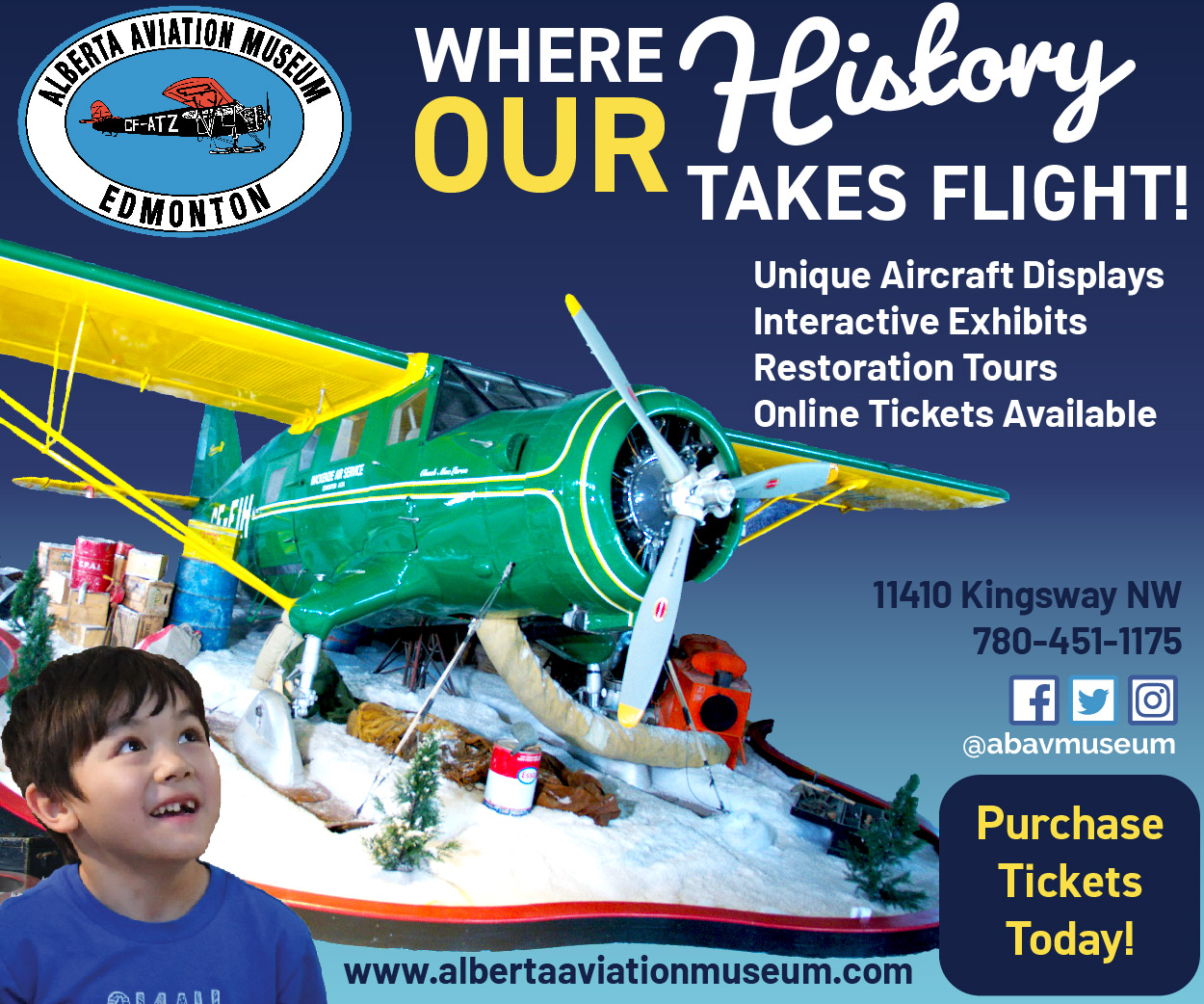Ultralight
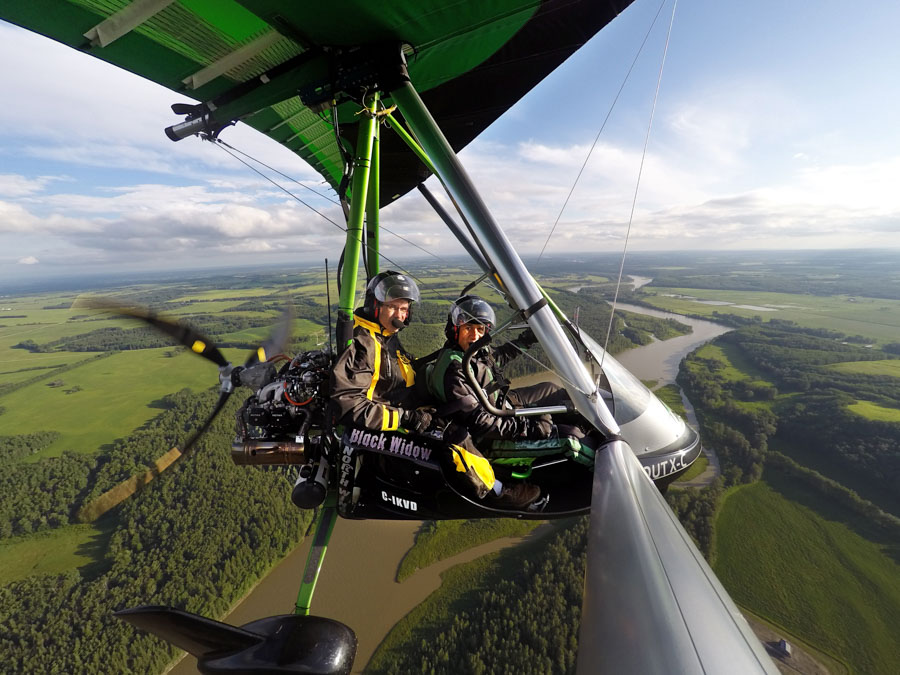
Relatively cheap and straightforward, ultralight aircraft make flight accessible – and a lot of fun – for the masses.
“Ever been inside a cloud before?” Claudio Mota shouts over his shoulder.
Straining to hear the flight instructor over the buzz of the engine, all I can say is that I’ve seen clouds from airplane windows. That’s nothing like feeling it on your skin, Claudio answers, and I get a sense of why he feels so at ease now, a couple of thousand feet above a looping bend in the North Saskatchewan River, northeast of Drayton Valley. The Air Adventure Flight School’s ultralight trike that he’s piloting and in which I’m a passenger has an open-air cockpit, so the views are all around us. The twisting, greenish-brown river. The fields, brightly verdant with July rain, stretching into the hazy distance. A tractor-trailer crawling along a secondary highway below. Endless sky. From this height, everything looks not so much distant as somehow miniaturized.
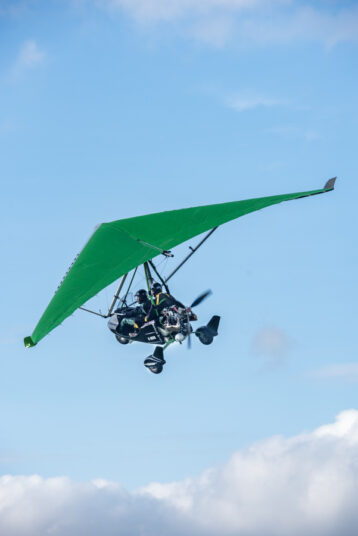
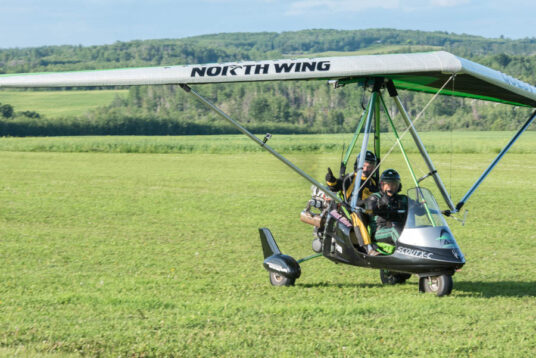
Looking up, I see we still have some distance to climb before we reach the nearest clouds. Claudio obviously intends to take us up there, and I admittedly tense a little. I’ve never been a fan of heights, let alone flying. But the ultralight experience is surprisingly different. Exposed to the elements, you feel like you’re more immersed in the act of flying. Rather than, say, passively watching things unfold from a narrow, double-paned window.
Claudio explains the reason he wants to go higher: with the evening sun sinking in the west, it’s a good opportunity to view a glory—an optical illusion cast on clouds or mist by a low sun. A glory consists of a magnified shadow circled by bands of rainbow, created as water droplets diffract sunlight. They’re so named because the rainbow resembles the halos in old religious paintings. If nothing else, it’s a handy excuse for exploring the range and possibilities of ultralight flying.
Ultralights represent one of the fastest growing areas of aviation in Canada. First developed in the 1980s, they now make up a fifth of all registered civilian aircraft. These lightweight, powered hang gliders are controlled by weight shift—the pilot steers the aircraft by applying force to a control bar. The engine is used to gain altitude, after which the pilot may cut power to glide back to earth. The aircraft are often referred to as “trikes,” giving rise to a common analogy: if flying a Cessna is like driving a Cadillac, then flying an ultralight is like riding a motorbike.
Claudio shifts the control bar, and we start to climb. Though it’s a summer evening, ideal time for flying, it’s a windy one. We’re protected from the elements and the temperature change—about a degree Celsius for every 100 metres of altitude—by our heavy flight suits. My nerves are slightly on edge, though, as I watch buildings and features on the ground grow ever smaller.
Before long we’re levelling out. Fast-moving wisps of stratus cloud drift across our faces, and indeed, it is a cool sensation. Claudio steers the trike around, putting us between the setting sun and a mass of cloud. I look to my left, and there it is: the dark shadow of the trike on a white backdrop, surrounded by rings of colour. We linger for a bit, taking it in along with the expansive views all around us. Then Claudio kills the engine, and we comfortably drift back to the sureness of ground again.
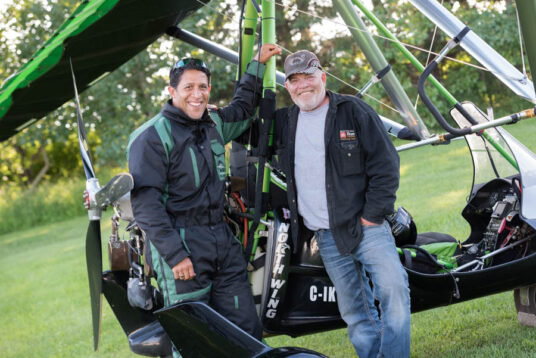
Besides ultralight trikes, Air Adventure Flight School also offers flight instruction for paragliders, gyroplanes (a sort of mini-helicopter that uses air power to attain lift), and paramotors (a parachute powered by a motor worn on the pilot’s back). The school is located on Highway 624, about 21 km north of Drayton Valley or 31 km southwest of Seba Beach. Visit airadventurefs.ca for more info.
Getting an Ultralight Permit in Canada
According to Transport Canada, ultralight permits must be at least 16 years of age and medically cleared to fly. They have to complete a minimum of 20 hours of flight instruction and pass a written examination. Additionally, they must acquire a minimum of 10 hours flight time, including at least two hours of solo flight time, and a minimum of 30 takeoffs and landings, with 10 or more of those as the solo occupant.
Air Adventures Flight School
More Like This
Backyard Home Theatre
Read
Edmonton From Above
Read
‘Motoring’ around Edmonton
Read





